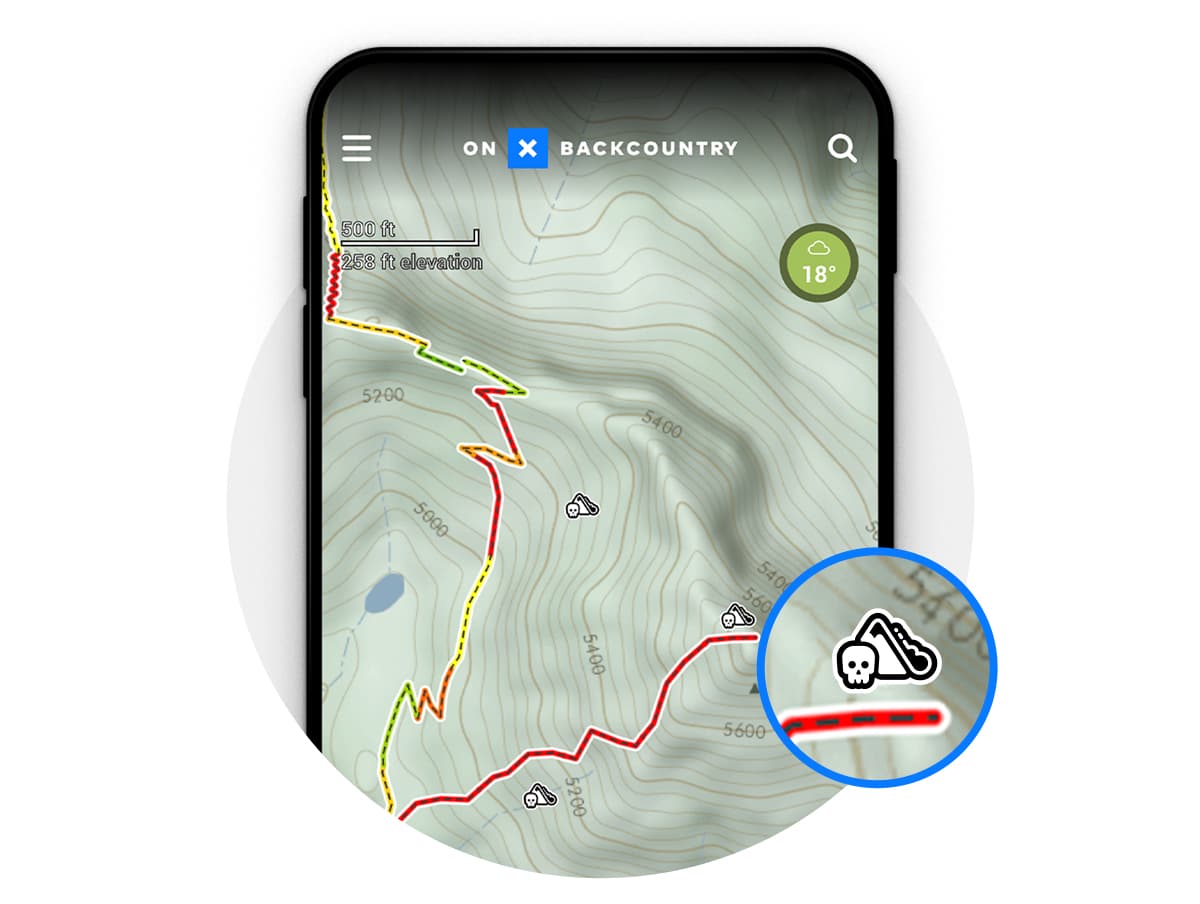Avalanche Fatalities–Historic Fatality Data and Ways to Avoid It
We’ve added an icon to our Snow Mode Basemap that indicates where there has been an avalanche fatality since the 2009/2010 season.
Deadliest Avalanche In U.S. History
In 1910, a catastrophic amount of snow blanketed the Cascade Range of Washington. Sheer amounts of snow, massive wind-loading, and the dreaded “r” word (rain), combined to make an incredibly weak snowpack. Two trains were stuck near Stevens Pass and when a slab broke loose and sent them catapulting down the valley. Ninety-six lives were lost and it remains the single deadliest avalanche event in U.S. history.
Avalanches have occurred since the dawn of time, but only in the last 50 years or so, have human-triggered ones become commonplace. In the U.S., detailed records exist dating back to the 1950s while piecemeal record keeping on historic avalanches go back to the 1800s. As we look toward the future, and an increasing participation in backcountry travel, it’s important to keep an eye on historic avalanche fatalities to see what comes of these figures.
Colorado
The hub for avalanche information in Colorado, both historically and currently, is the Colorado Avalanche Information Center (CAIC). Partially government funded and philanthropically funded, this resource advises numerous agencies, recreationalist, and the general public on what the snowpack is doing, has done, and might do in the Centennial State. In the winter of 21-22, they recorded seven fatalities. Colorado has the highest amount of avalanche fatalities by state, nearly doubling the second-highest, Alaska.
Learn more about the CAIC.
Utah
Last year, despite sketchy snowpacks and increased participation in backcountry travel, Utah recorded zero avalanche fatalities, according to the Utah Avalanche Center. This may be due in part to the amount of forecasts, and engagement with those forecasts. The Center issued 1,100 forecasts and those were viewed 700,000 times. The backcountry community played a big part in that by submitting 1,300 field reports. Despite that, 219 human-triggered avalanches did occur, with a mix of non-burials, partial burials, and full burials.
Learn more about the Utah Avalanche Center.
Washington
In the 21-22 season, Washington had one avalanche fatality. It was an early-season slide in which six backcountry travelers were buried. The Northwest Avalanche Center delivered 1,350 avalanche forecasts.
Why Avalanches Happen
Avalanches occur for myriad reasons, but primarily, they are caused by natural or human triggers that separate two layers of snow that haven’t properly bonded together. Under pressure, it is prone to slide, causing whatever or whomever is on top of it, to be carried downhill.
Can Avalanches Be Prevented?
While human-triggered avalanches are an inherent part of backcountry travel, there are ways to mitigate your risk of exposing yourself to them.
First, take a backcountry travel course like the American Institute for Avalanche Research and Education (AIARE) 1 course. That will equip you with the tools and vocabulary to read an avalanche forecast, manage terrain, and the beginnings of snowpack analysis.
Other things you can do to avoid being in a human-triggered avalanche include staying on slopes under 30 degrees. Places such as Bluebird Backcountry in Colorado provide avalanche mitigation while still offering a backcountry skiing experience. And lastly, and most importantly, travel with partners who you trust.
Avalanche Fatalities—Where It Came From
Over the last year, we’ve gone deep with professionals in avalanche safety. For this project we enlisted the help of the Colorado Avalanche Information Center (CAIC) and the National Avalanche Center (NAC), on creating a valuable structure of iconography. “Our [avalanche center’s] business is to get critical information into the hands of people to keep them safe. onX Backcountry helps us do our job better by sharing the work we do with their users,” says Ethan Greene of the CAIC.
You Asked, We Listened
In a recent customer survey as well as countless conversations with avalanche professionals, we confirmed that our users place value on a few things while using our app—especially Offline Maps and information tied to avalanches. Our commitment to avalanche safety is steadfast, but also addresses our place as only one (albeit, great) tool to help you make decisions in the backcountry. We wanted to bring you something never before done, a comprehensive list of fatal avalanche reports on one map for free.
“We believe it’s important safety information that any user should have access to. The data is already free via avalanche centers, we’ve just made it more visual.”
Charlie Avis, onX Backcountry Product Manager
Since the 2009/2010 season, the CAIC has been aggregating avalanche incident reports on their website. For this launch, we worked with them to link fatal incidents to their respective locations on our map. The intent here is to outline patterns in high-traffic areas to provide information that may allow the user to avoid the same outcome. Now, before you head into a zone, either new or familiar, you can prepare better.

How to Use It
While planning your route either on desktop or on the go, zoom into the general vicinity in which you’ll be recreating to display the icon. This denotes where a fatal avalanche has occurred since the 2009/2010 season. Clicking the icon populates a card containing basic information about the incident like date, location, number of fatalities, elevation, and, most importantly, a link to the full incident report on the CAIC’s website where you can find a much more detailed description. It’s important to note that this isn’t a list of comprehensive avalanche accidents, nor does it outline every slope that could potentially be deadly. Be sure to use your avalanche education course training, our slope angle tool, and mentors to learn about safety in the mountains.